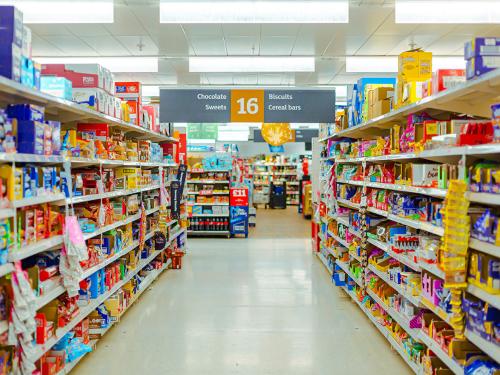On the 14th of February the Office for National Statistics (ONS) announced that the overall annual inflation for January 2024 was still at 4 per cent, as in December 2023. However, it was also announced that the food inflation figure for January represented the first monthly fall in food prices since 2021 (BBC, 2024). This is very good news as food has been one of the leading sectors contributing to the higher-to-the-target overall price inflation.
Although, it is better to take a look at annual levels of inflation instead of monthly figures, due to the presence of seasonality. Figure 1 shows the evolution of the annual overall and food and drink price inflation and it is clear both inflations (all items and food and non-alcoholic beverages) have been on the rise since 2021.
Figure 1: Evolution of overall and food and non-alcoholic beverages price inflation 2021 – 2023.
Source: Office of National Statistics (2024).
It can also be seen that the annual rate of inflation for food and non-alcoholic beverages grew faster after the first quarter 2022. By 2023, the annual price inflation for food and non-alcoholic beverages was almost twice that of the general price inflation for the economy (all items). Even though, inflation declined in January 2024 when compared to the previous year, the rate is still higher than the overall price inflation in the economy. Food and non-alcoholic beverage price inflation remains about 50 per cent higher than the overall national average of 4 per cent.
This isn't surprising since the UK food and drinks sector has suffered significant setbacks due to recent unprecedented shocks to the agrifood sector. The effect of supply chain disruptions brought about by Brexit, the COVID-19 pandemic and the war in Ukraine has been long lasting. Labour shortages and high input prices have translated into high food prices worsening the cost of achieving an affordable diet for consumers. In addition, it is believed that the recent hijack of cargo ships on the Black Sea has also worsened the already fragile food and drinks supply chain.
There are differences in inflation depending on the particular items though. Figure 2 disaggregates the food and non-alcoholic drinks price inflation across its 11 food aggregates and it is evident there are marked differences in the rate of inflation across the 11 food categories.
Figure 2: Annual inflation for different food aggregates – January 2024
Source: Office of National Statistics
Note: The dashed line indicates the overall CPI inflation for january 2024
Only two food aggregates had inflation levels below the national average (although still showing some inflation): milk, cheese, and eggs, and fish. Sugar, jam, syrups, chocolate and confectionery had the biggest inflation when compared to the average for the category. Though this category is higher, this could have the benefit of steering consumers away from consuming sugar-dense foods. Although unfortunately, inflation rates for fruits and vegetables are also still high and this could offset policies like the ‘five-a-day’ campaign aimed at increasing fruit and veg consumption to 400 grams per person per day. Meaning food inflation could have both a positive and negative impact on our dietary choices.
In summary, there has been progress, and food inflation is decreasing as a result of the slow return to normality of the food supply chains. However, it will probably still remain above the average inflation for a couple of months more and we need to monitor its impact.
By Dr Wisdom Dogbe at the Rowett Institute and Professor Cesar Revoredo Giha at Scotland’s Rural College (SRUC).
